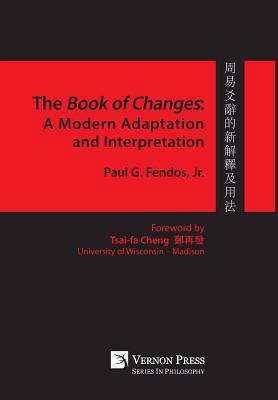
- Retrait gratuit dans votre magasin Club
- 7.000.000 titres dans notre catalogue
- Payer en toute sécurité
- Toujours un magasin près de chez vous
- Retrait gratuit dans votre magasin Club
- 7.000.0000 titres dans notre catalogue
- Payer en toute sécurité
- Toujours un magasin près de chez vous
Description
The Book of Changes: A Modern Adaptation and Interpretation attempts
to breathe new life into the Book of Changes by making it relevant
to the present time and day. It does so by using archaeological
evidence to trace the origins of the Book of Changes, starting with numeric
trigrams and hexagrams, making its way up to early divination
manuals, and ending with the oldest extant version of the Books of
Changes--usually referred to as the 'received version.' It also explains
the development of the Book of Changes from a divination manual
into a philosophical text dealing with change. However, its main
focus is on delineating sixty-four patterns of change in the Book of
Changes, patterns based on novel metaphorical interpretations of the
line texts in the Book of Changes that serve as the foundation for a new
handbook on change.
Each metaphorical interpretation consists of 1) a hexagram and the
Chinese character(s) associated with it, 2) a 'description' of the hexagram,
3) the Chinese characters for the line texts, 4) translations of
the line texts, 5) a general interpretation of the line texts based on
those translations, 6) and some explanatory notes that attempt to
clarify each interpretation. Translations and the interpretations
based on those translations reference Traditional and Modernist understandings
of the line text materials, ancient texts/dictionaries/
lexicons from the period when the Book of Changes was compiled, and
the ideas of the author as he works to create a new Chinese 'philosophy
of change, ' complete with examples of how it can be adapted in
modern-day life.
The clear and concise general introduction to the Book of Changes
that is incorporated into this work, the many interpretations of the
line texts contained in it, and a popular philosophical content make
this book a welcome addition to the field and will attract interested
scholars and teachers, engage business people or those looking to
better understand Chinese culture, and appeal to those focused on
spirituality and holistic living.
Spécifications
Parties prenantes
- Auteur(s) :
- Editeur:
Contenu
- Nombre de pages :
- 292
- Langue:
- Chinois, Anglais
- Collection :
Caractéristiques
- EAN:
- 9781622733279
- Date de parution :
- 09-01-18
- Format:
- Livre relié
- Format numérique:
- Genaaid
- Dimensions :
- 152 mm x 229 mm
- Poids :
- 544 g

Les avis
Nous publions uniquement les avis qui respectent les conditions requises. Consultez nos conditions pour les avis.






